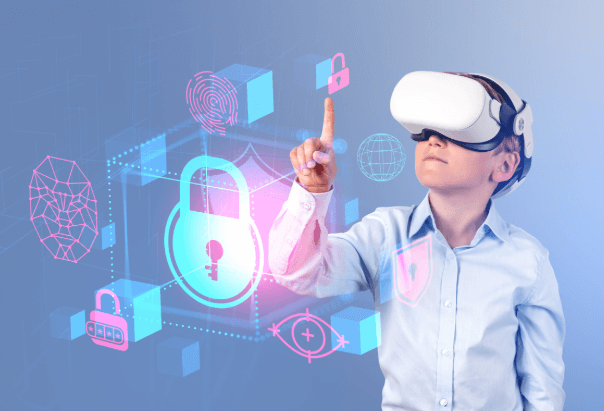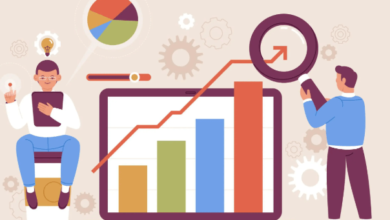Virtual Reality (VR) in Education and Training Platforms

Virtual reality (VR) has emerged as a groundbreaking technology, revolutionizing the way we learn and train across various fields. By creating immersive, interactive, and engaging virtual environments, VR allows learners to explore and practice skills in ways that traditional methods cannot match. From classrooms to corporate training centers, VR is shaping the future of education and training, making it more effective, accessible, and personalized.
The Evolution of VR in Education and Training
The idea of using virtual environments for learning has been around for decades, but the technology was limited by hardware constraints and costs. Today, advancements in VR technology have made it more accessible and sophisticated, enabling its integration into educational and training platforms. Devices such as Oculus Rift, HTC Vive, and standalone headsets like the Meta Quest have opened doors for VR experiences that cater to diverse learning needs.
What once seemed futuristic is now a practical tool in education, with VR being used to teach subjects as varied as science, history, engineering, and even the arts. Meanwhile, in training environments, VR is applied to simulate real-world scenarios in industries like healthcare, aviation, and manufacturing.
Advantages of VR in Education and Training
VR offers unparalleled benefits in both education and training. The immersive nature of VR helps learners focus entirely on the subject matter, eliminating distractions. It also provides hands-on experiences in a controlled and safe environment.
In education, VR allows students to explore abstract concepts or historical events as though they were physically present. For example, learners can virtually walk through the ruins of ancient Rome, observe a solar system up close, or even simulate chemical reactions without the risks associated with real-world experiments. These experiences not only enhance understanding but also improve retention rates.
For training, VR is invaluable in preparing individuals for high-stakes scenarios. Pilots can practice emergency landings in a flight simulator, surgeons can refine techniques without operating on real patients, and factory workers can learn to operate heavy machinery safely. The ability to repeat scenarios until proficiency is achieved is a game-changer, particularly in fields where errors could be costly or dangerous.
VR and Personalized Learning
One of the most transformative aspects of VR in education is its ability to personalize the learning experience. Traditional classrooms often struggle to cater to the unique needs of each student. VR addresses this by adapting content to individual learning styles and paces.
For example, a VR educational platform can monitor a student’s progress and provide tailored feedback or additional challenges. This adaptability ensures that learners remain engaged and progress at a pace suited to their abilities. Moreover, VR can make learning more inclusive, accommodating students with disabilities by providing accessible and customizable virtual environments.
VR Training for Workforce Development
Workforce training has witnessed a significant boost with VR technology. It enables employees to gain practical experience in a virtual setting, reducing costs and risks associated with traditional training methods.
In industries like construction, VR can simulate scenarios where workers learn to handle dangerous situations, such as operating cranes or dealing with electrical hazards, without any real-world danger. Similarly, VR training in the military helps soldiers prepare for combat scenarios, offering a realistic yet safe environment to practice strategies and decision-making.
Retail and customer service sectors have also embraced VR for onboarding and skill development. Employees can practice handling customer interactions, resolving conflicts, or learning about new products in an interactive, risk-free setting.
The Role of Gamification in VR Education
Gamification, the incorporation of game elements into non-gaming contexts, has proven to be a powerful tool in VR education and training. VR platforms often integrate gamification features such as rewards, levels, and challenges to make learning more engaging.
In a VR biology class, for example, students might earn points for correctly assembling a virtual human anatomy model. In corporate training, employees might progress through levels as they master different skills. These gamified elements not only make learning enjoyable but also motivate learners to achieve their goals.
Challenges and Limitations of VR in Education and Training
While the potential of VR is immense, its widespread adoption faces certain challenges. The cost of VR hardware and software remains a barrier for many schools and organizations, particularly in developing regions. Although prices are gradually decreasing, the initial investment can still be significant.
Another challenge is the need for high-quality, tailored content. Effective VR learning experiences require carefully designed simulations that align with educational goals. Developing such content is time-consuming and resource-intensive.
Additionally, some users may experience motion sickness or discomfort during prolonged VR sessions. This can limit the time learners can spend in virtual environments, reducing the effectiveness of the training.
Finally, integrating VR into existing educational systems and training programs requires technical expertise and infrastructure that may not always be readily available.
Emerging Trends in VR for Education and Training
The future of VR in education and training looks promising as advancements in technology continue to address current limitations. One emerging trend is the integration of artificial intelligence (AI) with VR, which enables even more personalized and adaptive learning experiences.
Another exciting development is the rise of collaborative VR platforms. These allow multiple users to interact in the same virtual environment, fostering teamwork and communication skills. For example, students from different parts of the world can collaborate on a science experiment, or trainees in different locations can practice emergency response procedures together.
The use of cloud technology is also expanding, enabling VR content to be accessed more easily and reducing the need for expensive hardware.
The Impact of VR on Traditional Education and Training Models
VR is not just a tool; it represents a shift in how education and training are perceived. Traditional models often rely on passive learning, with students listening to lectures or reading textbooks. VR introduces active learning, where learners engage directly with the material in meaningful ways.
This shift challenges educators and trainers to rethink their methodologies, encouraging them to adopt more interactive and experiential approaches. It also fosters a lifelong learning mindset, as VR makes education and training more engaging and accessible to people of all ages.
Conclusion
Virtual reality is revolutionizing education and training by creating immersive, engaging, and effective learning experiences. Its ability to simulate real-world scenarios, personalize content, and enhance understanding has already demonstrated its transformative potential in various fields. While challenges remain, technological advancements and growing adoption rates suggest that VR will play an increasingly prominent role in shaping the future of learning and skill development.
As VR continues to evolve, it is poised to bridge gaps in education and training, making high-quality learning accessible to individuals and organizations worldwide. With its blend of innovation and practicality, VR is not just enhancing education and training—it is redefining them for the 21st century.




